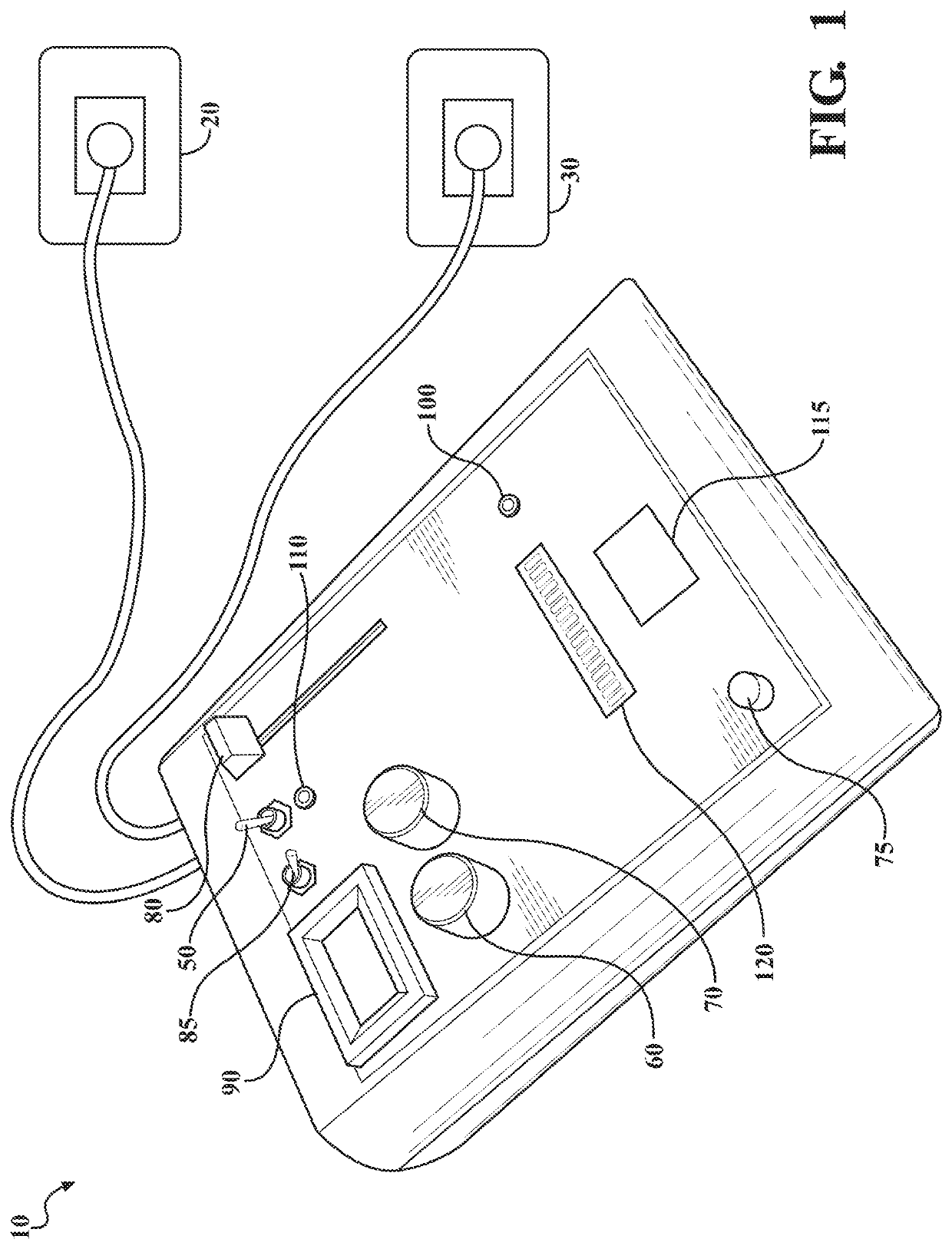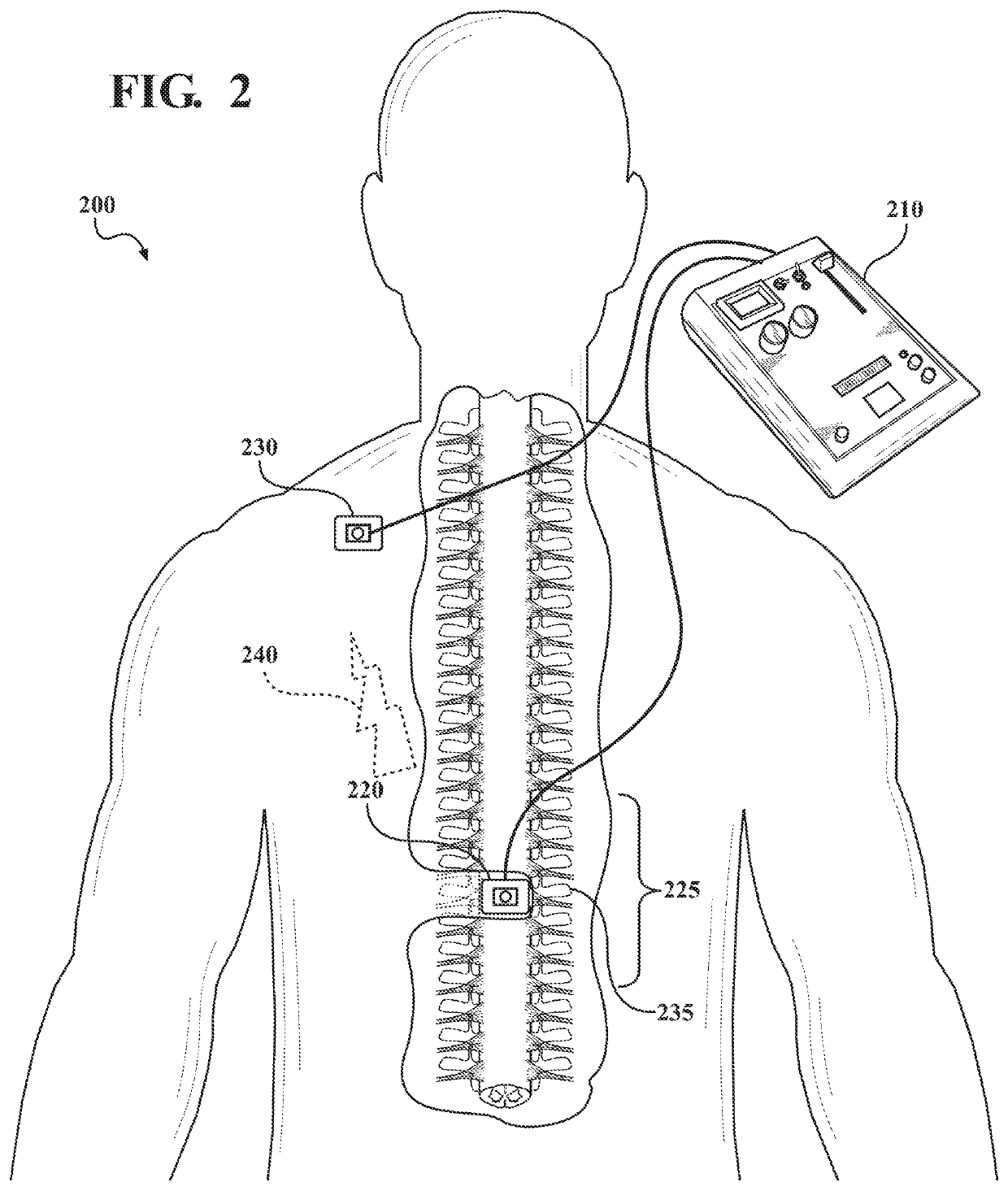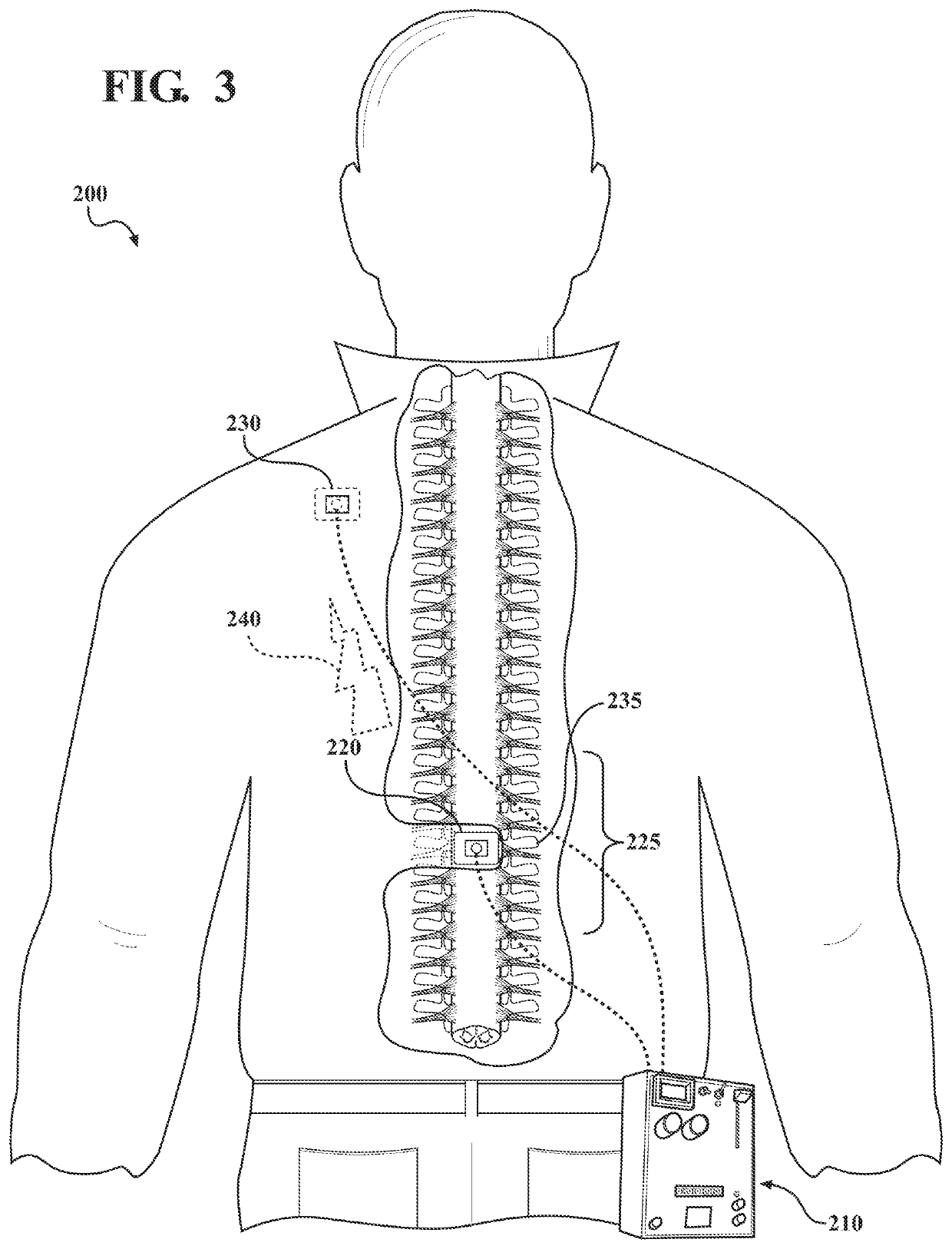Transcutaneous spinal cord stimulation for treatment of psychiatric disorders
a psychiatric disorder and transcutaneous technology, applied in the field of non-invasive methods of treating psychiatric disorders, can solve the problems of affecting the ability to function, mdd impairs the functioning of afflicted individuals, and few effective treatments are available, so as to reduce one or more symptoms and/or comorbidities, the effect of decreasing sympathetic activity
- Summary
- Abstract
- Description
- Claims
- Application Information
AI Technical Summary
Benefits of technology
Problems solved by technology
Method used
Image
Examples
examples
[0075]An 8-week, double blinded, randomized, sham controlled, parallel group, clinical trial study was designed in which a total of 20 adult antidepressant-free MDD patients will be randomized to receive Active (n=10) or Sham (n=10) tsDCS protocols for 8 weeks in a 1:1 ratio.
[0076]Outcome of treatment by modulation of spinal input to the brain using tsDCS will be assessed by one or more of: psychometric instruments, measures of mood disorder symptom severity, anxiety, somatic symptoms of mood disorders, interoceptive awareness, autonomic function, and metabolic markers known to be regulated by sympathetic activity. The study combines the use of a tsDCS system for stimulation treatment, with one or more methods of assessing the effectiveness of the stimulation treatment: psychometric instruments to diagnose MDD (M.I.N.I.), measures of depressive symptom severity (MADRS and PHQ-9), assessment of somatic symptoms (4DSQ), assessment of interoceptive awareness (MAIA), assessment of auton...
PUM
 Login to View More
Login to View More Abstract
Description
Claims
Application Information
 Login to View More
Login to View More - R&D
- Intellectual Property
- Life Sciences
- Materials
- Tech Scout
- Unparalleled Data Quality
- Higher Quality Content
- 60% Fewer Hallucinations
Browse by: Latest US Patents, China's latest patents, Technical Efficacy Thesaurus, Application Domain, Technology Topic, Popular Technical Reports.
© 2025 PatSnap. All rights reserved.Legal|Privacy policy|Modern Slavery Act Transparency Statement|Sitemap|About US| Contact US: help@patsnap.com



